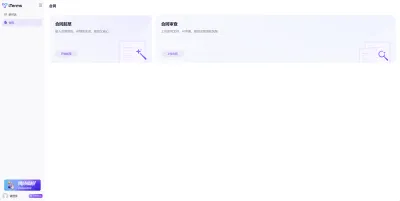Capsolver
Capsolver.com is an AI-powered service that specializes in solving various types of captchas automatically. It supports captchas such as reCAPTCHA V2, reCAPTCHA V3, hCaptcha, FunCaptcha, DataDome, AWS Captcha, Geetest, and Cloudflare Captcha / Challenge 5s, Imperva / Incapsula, among others.
For developers, Capsolver offers API integration options detailed in their documentation, facilitating the integration of captcha solving into applications. They also provide browser extensions for Chrome and Firefox, making it easy to use their service directly within a browser. Different pricing packages are available to accommodate varying needs, ensuring flexibility for users.
SimGAN-Captcha
With simulated unsupervised learning, breaking captchas has never been easier. There is no need to label any captchas manually for convnet. By using a captcha synthesizer and a refiner trained with GAN, it's feasible to generate synthesized training pairs for classifying captchas.
Link to paper: SimGAN by Apple

The task
Correctly label 10000 out of 15000 captcha or 90% per character.
Preprocessing
Download target captcha files
Here we download some captchas from the contest website. Each batch has 1000 captchas. We'll use 20000 so 20 batches.
import requests import threading URL = "https://captcha.delorean.codes/u/rickyhan/challenge" DIR = "challenges/" NUM_CHALLENGES = 20 lock = threading.Lock()
def download_file(url, fname): # NOTE the stream=True parameter r = requests.get(url, stream=True) with open(fname, 'wb') as f: for chunk in r.iter_content(chunk_size=1024): if chunk: # filter out keep-alive new chunks f.write(chunk) #f.flush() commented by recommendation from J.F.Sebastian with lock: pass # print fname ts = [] for i in range(NUM_CHALLENGES): fname = DIR + "challenge-{}".format(i) t = threading.Thread(target=download_file, args=(URL, fname)) ts.append(t) t.start() for t in ts: t.join() print "Done"
Done
Decompression
Each challenge file is actually a json object containing 1000 base64 encoded jpg image file. So for each of these challenge files, we decompress each base64 strs into a jpeg and put that under a seprate folder.
import json, base64, os IMG_DIR = "./orig" fnames = ["{}/challenge-{}".format(DIR, i) for i in range(NUM_CHALLENGES)] if not os.path.exists(IMG_DIR): os.mkdir(IMG_DIR) def save_imgs(fname): with open(fname) as f: l = json.loads(f.read()) for image in l['images']: b = base64.decodestring(image['jpg_base64']) name = image['name'] with open(IMG_DIR+"/{}.jpg".format(name), 'w') as f: f.write(b) for fname in fnames: save_imgs(fname) assert len(os.listdir(IMG_DIR)) == 1000 * NUM_CHALLENGES
from PIL import Image imgpath = IMG_DIR + "/"+ os.listdir(IMG_DIR)[0] imgpath2 = IMG_DIR + "/"+ os.listdir(IMG_DIR)[3] im = Image.open(example_image_path) im2 = Image.open(example_image_path2) IMG_FNAMES = [IMG_DIR + '/' + p for p in os.listdir(IMG_DIR)]
im

im2

Convert to black and white
Instead of RGB, binarized image saves significant compute. Here we hardcode a threshold and iterate over each pixel to obtain a binary image.
def gray(img_path): # convert to grayscale, then binarize img = Image.open(img_path).convert("L") img = img.point(lambda x: 255 if x > 200 or x == 0 else x) # value found through T&E img = img.point(lambda x: 0 if x < 255 else 255, "1") img.save(img_path) for img_path in IMG_FNAMES: gray(img_path)
im = Image.open(example_image_path) im

Find mask
As you may have noticed, all the captchas share the same horizontal lines. Since this is a contest, it was a function of participant's username. In the real world, these noises can be filtered out using morphological transformation with OpenCV.
We will extract and save the lines(noise) for later use. Here we average all 20000 captchas and set a threshold as above. Another method is using a bit mask (&=) to iteratively filter out surrounding black pixels i.e.
mask = np.ones((height, width))
for im in ims:
mask &= im
The effectiveness of bit mask depends on how clean the binarized data is. With the averaging method, some error is allowed.
import numpy as np WIDTH, HEIGHT = im.size MASK_DIR = "avg.png"
def generateMask(): N=1000*NUM_CHALLENGES arr=np.zeros((HEIGHT, WIDTH),np.float) for fname in IMG_FNAMES: imarr=np.array(Image.open(fname),dtype=np.float) arr=arr+imarr/N arr=np.array(np.round(arr),dtype=np.uint8) out=Image.fromarray(arr,mode="L") out.save(MASK_DIR) generateMask()
im = Image.open(MASK_DIR) # ok this can be done with binary mask: &= im

im = Image.open(MASK_DIR) im = im.point(lambda x:255 if x > 230 else x) im = im.point(lambda x:0 if x<255 else 255, "1") im.save(MASK_DIR)
im

Generator for real captchas
Using a Keras built in generator function flow_from_directory to automatically import and preprocess real captchas from a folder.
from keras import models from keras import layers from keras import optimizers from keras import applications from keras.preprocessing import image import tensorflow as tf
# Real data generator datagen = image.ImageDataGenerator( preprocessing_function=applications.xception.preprocess_input ) flow_from_directory_params = {'target_size': (HEIGHT, WIDTH), 'color_mode': 'grayscale', 'class_mode': None, 'batch_size': BATCH_SIZE} real_generator = datagen.flow_from_directory( directory=".", **flow_from_directory_params )
(Dumb) Generator
Now that we have processed all the real captchas, we need to define a generator that outputs (captcha, label) pairs where the captchas should look almost like the real ones.
We filter out the outliers that contain overlapping characters.
# Synthetic captcha generator from PIL import ImageFont, ImageDraw from random import choice, random from string import ascii_lowercase, digits alphanumeric = ascii_lowercase + digits def fuzzy_loc(locs): acc = [] for i,loc in enumerate(locs[:-1]): if locs[i+1] - loc < 8: continue else: acc.append(loc) return acc def seg(img): arr = np.array(img, dtype=np.float) arr = arr.transpose() # arr = np.mean(arr, axis=2) arr = np.sum(arr, axis=1) locs = np.where(arr < arr.min() + 2)[0].tolist() locs = fuzzy_loc(locs) return locs def is_well_formed(img_path): original_img = Image.open(img_path) img = original_img.convert('1') return len(seg(img)) == 4 noiseimg = np.array(Image.open("avg.png").convert("1")) # noiseimg = np.bitwise_not(noiseimg) fnt = ImageFont.truetype('./arial-extra.otf', 26) def gen_one(): og = Image.new("1", (100,50)) text = ''.join([choice(alphanumeric) for _ in range(4)]) draw = ImageDraw.Draw(og) for i, t in enumerate(text): txt=Image.new('L', (40,40)) d = ImageDraw.Draw(txt) d.text( (0, 0), t, font=fnt, fill=255) if random() > 0.5: w=txt.rotate(-20*(random()-1), expand=1) og.paste( w, (i*20 + int(25*random()), int(25+30*(random()-1))), w) else: w=txt.rotate(20*(random()-1), expand=1) og.paste( w, (i*20 + int(25*random()), int(20*random())), w) segments = seg(og) if len(segments) != 4: return gen_one() ogarr = np.array(og) ogarr = np.bitwise_or(noiseimg, ogarr) ogarr = np.expand_dims(ogarr, axis=2).astype(float) ogarr = np.random.random(size=(50,100,1)) * ogarr ogarr = (ogarr > 0.0).astype(float) # add noise return ogarr, text def synth_generator(): arrs = [] while True: for _ in range(BATCH_SIZE): arrs.append(gen_one()[0]) yield np.array(arrs) arrs = []
def get_image_batch(generator): """keras generators may generate an incomplete batch for the last batch""" img_batch = generator.next() if len(img_batch) != BATCH_SIZE: img_batch = generator.next() assert len(img_batch) == BATCH_SIZE return img_batch
import matplotlib.pyplot as plt imarr = get_image_batch(real_generator)[0, :, :, 0] plt.imshow(imarr)
<matplotlib.image.AxesImage at 0x7f160fda74d0>

imarr = get_image_batch(synth_generator())[0, :, :, 0] print imarr.shape plt.imshow(imarr)
(50, 100)
<matplotlib.image.AxesImage at 0x7f160fdd4390>

What happened next?
Plug all the data in an MNIST-like classifier and call it a day. Unfortunately, it's not that simple.
I actually spent a long time fine-tuning the network but accuracy plateued around 55% sampled. The passing requirement is 10000 out of 15000 submitted or 90% accuracy or 66% per char. I was facing a dilemma: tune the model even further or manually label x amount of data:
0.55 * (15000-x) + x = 10000
x = 3888
Obviously I am not going to label 4000 captchas and break my neck in the process.
Meanwhile, there happened a burnt out guy who decided to label all 10000 captchas. This dilligent dude was 2000 in. I asked if he is willing to collaborate on a solution. It's almost like he didn't want to label captchas anymore. He agreed immediately.
Using the same model, accuracy immediately shot up to 95% and we both qualified for HackMIT.
/aside
After the contest, I perfected the model and got 95% without labelling a single image. Here is the model for SimGAN:

Model Definition
There are three components to the network:
Refiner
The refiner network, Rθ, is a residual network (ResNet). It modifies the synthetic image on a pixel level, rather than holistically modifying the image content, preserving the global structure and annotations.
Discriminator
The discriminator network Dφ, is a simple ConvNet that contains 5 conv layers and 2 max-pooling layers. It's abinary classifier that outputs whether a captcha is synthesized or real.
Combined
Pipe the refined image into discriminator.
def refiner_network(input_image_tensor): """ :param input_image_tensor: Input tensor that corresponds to a synthetic image. :return: Output tensor that corresponds to a refined synthetic image. """ def resnet_block(input_features, nb_features=64, nb_kernel_rows=3, nb_kernel_cols=3): """ A ResNet block with two `nb_kernel_rows` x `nb_kernel_cols` convolutional layers, each with `nb_features` feature maps. See Figure 6 in https://arxiv.org/pdf/1612.07828v1.pdf. :param input_features: Input tensor to ResNet block. :return: Output tensor from ResNet block. """ y = layers.Convolution2D(nb_features, nb_kernel_rows, nb_kernel_cols, border_mode='same')(input_features) y = layers.Activation('relu')(y) y = layers.Convolution2D(nb_features, nb_kernel_rows, nb_kernel_cols, border_mode='same')(y) y = layers.merge([input_features, y], mode='sum') return layers.Activation('relu')(y) # an input image of size w × h is convolved with 3 × 3 filters that output 64 feature maps x = layers.Convolution2D(64, 3, 3, border_mode='same', activation='relu')(input_image_tensor) # the output is passed through 4 ResNet blocks for _ in range(4): x = resnet_block(x) # the output of the last ResNet block is passed to a 1 × 1 convolutional layer producing 1 feature map # corresponding to the refined synthetic image return layers.Convolution2D(1, 1, 1, border_mode='same', activation='tanh')(x) def discriminator_network(input_image_tensor): """ :param input_image_tensor: Input tensor corresponding to an image, either real or refined. :return: Output tensor that corresponds to the probability of whether an image is real or refined. """ x = layers.Convolution2D(96, 3, 3, border_mode='same', subsample=(2, 2), activation='relu')(input_image_tensor) x = layers.Convolution2D(64, 3, 3, border_mode='same', subsample=(2, 2), activation='relu')(x) x = layers.MaxPooling2D(pool_size=(3, 3), border_mode='same', strides=(1, 1))(x) x = layers.Convolution2D(32, 3, 3, border_mode='same', subsample=(1, 1), activation='relu')(x) x =
编辑推荐精选


潮际好麦
AI赋能电商视觉革命,一站式智能商拍平台
潮际好麦深耕服装行业,是国内AI试衣效果最好的软件。使用先进AIGC能力为电商卖家批量提供优质的、低成本的商拍图。合作品牌有Shein、Lazada、安踏、百丽等65个国内外头部品牌,以及国内10万+淘宝、天猫、京东等主流平台的品牌商家,为卖家节省将近85%的出图成本,提升约3倍出图效率,让品牌能够快速上架。


iTerms
企业专属的AI法律顾问
iTerms是法大大集团旗下法律子品牌,基于最先进的大语言模型(LLM)、专业的法律知识库和强大的智能体架构,帮助企业扫清合规障碍,筑牢风控防线,成为您企业专属的AI法律顾问。


SimilarWeb流量提升
稳定高效的流量提升解决方案,助力品牌曝光
稳定高效的流量提升解决方案,助力品牌曝光


Sora2视频免费生成
最新版Sora2模型免费使用,一键生成无水印视频
最新版Sora2模型免费使用,一键生成无水印视频


Transly
实时语音翻译/同声传译工具
Transly是一个多场景的AI大语言模型驱动的同声传译、专业翻译助手,它拥有超精准的音频识别翻译能力,几乎零延迟的使用体验和支持多国语言可以让你带它走遍全球,无论你是留学生、商务人士、韩剧美剧爱好者,还是出国游玩、多国会议、跨国追星等等,都�可以满足你所有需要同传的场景需求,线上线下通用,扫除语言障碍,让全世界的语言交流不再有国界。


讯飞绘文
选题、配图、成文,一站式创作,让内容运营更高效
讯飞绘文,一个AI集成平台,支持写作、选题、配图、排版和发布。高效生成适用于各类媒体的定制内容,加速品牌传播,提升内容营销效果。


TRAE编程
AI辅助编程,代码自动修复
Trae是一种自适应的集成开发环境(IDE),通过自动化和多元协作改变开发流程。利用Trae,团队能够更快速、精确地编写和部署代码,从而提高编程效率和项目交付速度。Trae具备上下文感知和代码自动完成功能,是提升开发效率的理想工具。


商汤小浣熊
最强AI数据分析助手
小浣熊家族Raccoon,您的AI智能助手,致力于通过先进的人工智能技术,为用户提供高效、便捷的智能服务。无论是日常咨询还是专业问题解答,小浣熊都能以快速、准确的响应满足您的需求,让您的生活更加智能便捷。


imini AI
像人一样思考的AI智能体
imini 是一款超级AI智能体,能根据人类指令,自主思考、自主完成、并且交付结果的AI智能体。


Keevx
AI数字人视频创作平台
Keevx 一款开箱即用的AI数字人视频创作平台,广泛适用于电商广告、企业培训与社媒宣传,让全球企业与个人创作者无需拍摄剪辑,就能快速生成多语言、高质量的专业视频。
推荐工具精选
AI云服务特惠
懂AI专属折扣关注微信公众号
最新AI工具、AI资讯
独家AI资源、AI项目落地

微信扫一扫关注公众号




